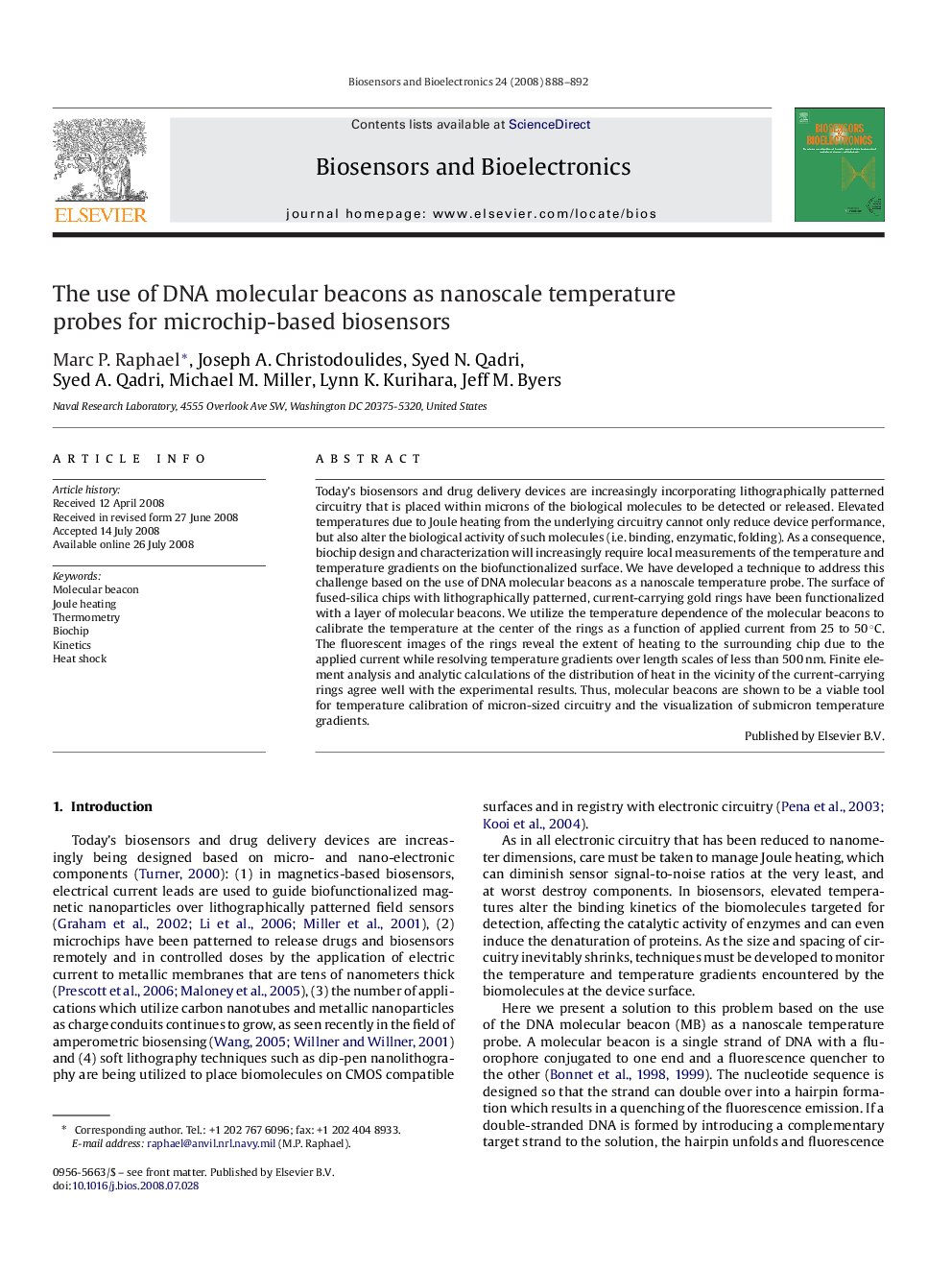| Article ID | Journal | Published Year | Pages | File Type |
|---|---|---|---|---|
| 869910 | Biosensors and Bioelectronics | 2008 | 5 Pages |
Today's biosensors and drug delivery devices are increasingly incorporating lithographically patterned circuitry that is placed within microns of the biological molecules to be detected or released. Elevated temperatures due to Joule heating from the underlying circuitry cannot only reduce device performance, but also alter the biological activity of such molecules (i.e. binding, enzymatic, folding). As a consequence, biochip design and characterization will increasingly require local measurements of the temperature and temperature gradients on the biofunctionalized surface. We have developed a technique to address this challenge based on the use of DNA molecular beacons as a nanoscale temperature probe. The surface of fused-silica chips with lithographically patterned, current-carrying gold rings have been functionalized with a layer of molecular beacons. We utilize the temperature dependence of the molecular beacons to calibrate the temperature at the center of the rings as a function of applied current from 25 to 50 °C. The fluorescent images of the rings reveal the extent of heating to the surrounding chip due to the applied current while resolving temperature gradients over length scales of less than 500 nm. Finite element analysis and analytic calculations of the distribution of heat in the vicinity of the current-carrying rings agree well with the experimental results. Thus, molecular beacons are shown to be a viable tool for temperature calibration of micron-sized circuitry and the visualization of submicron temperature gradients.
